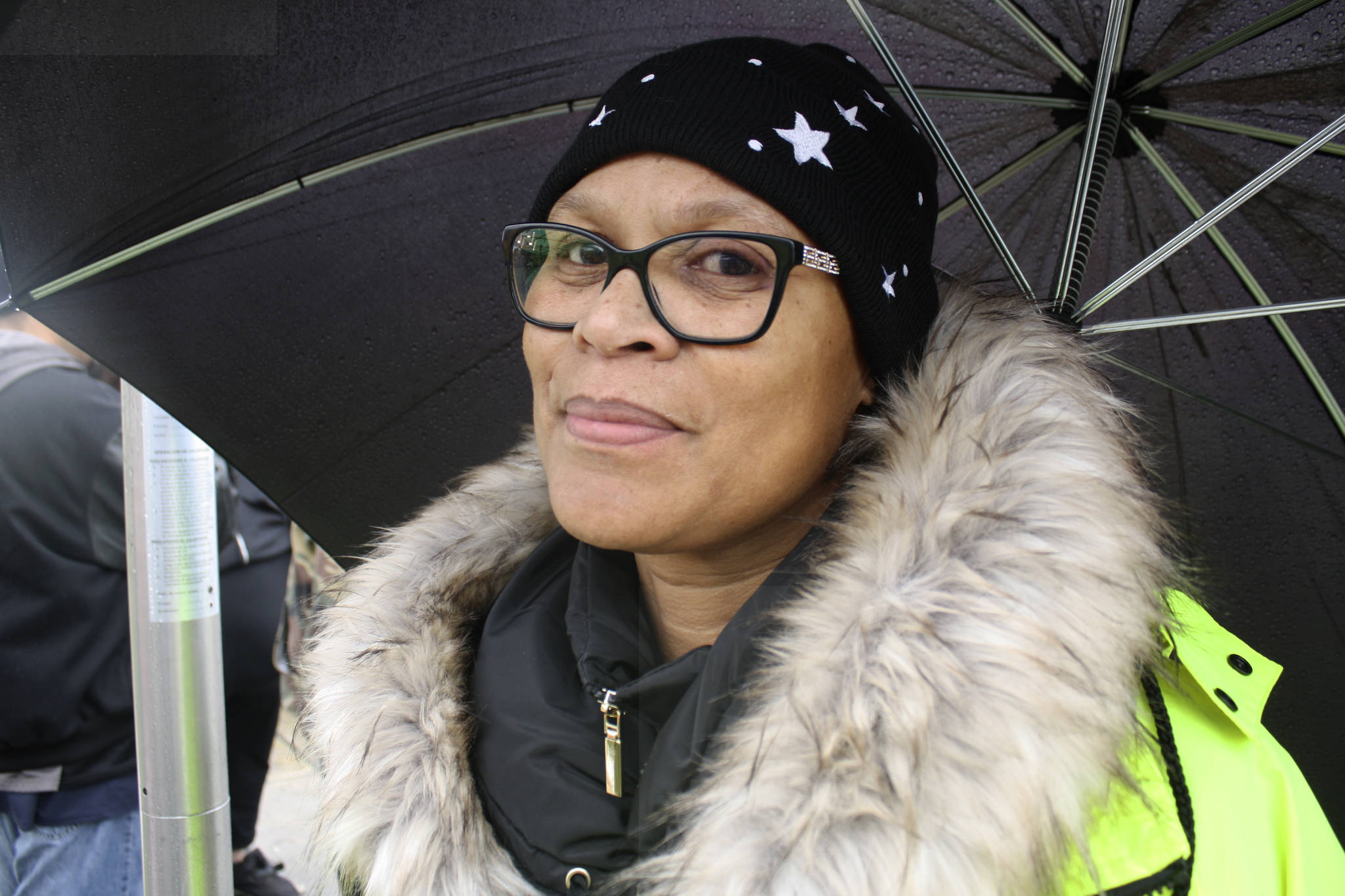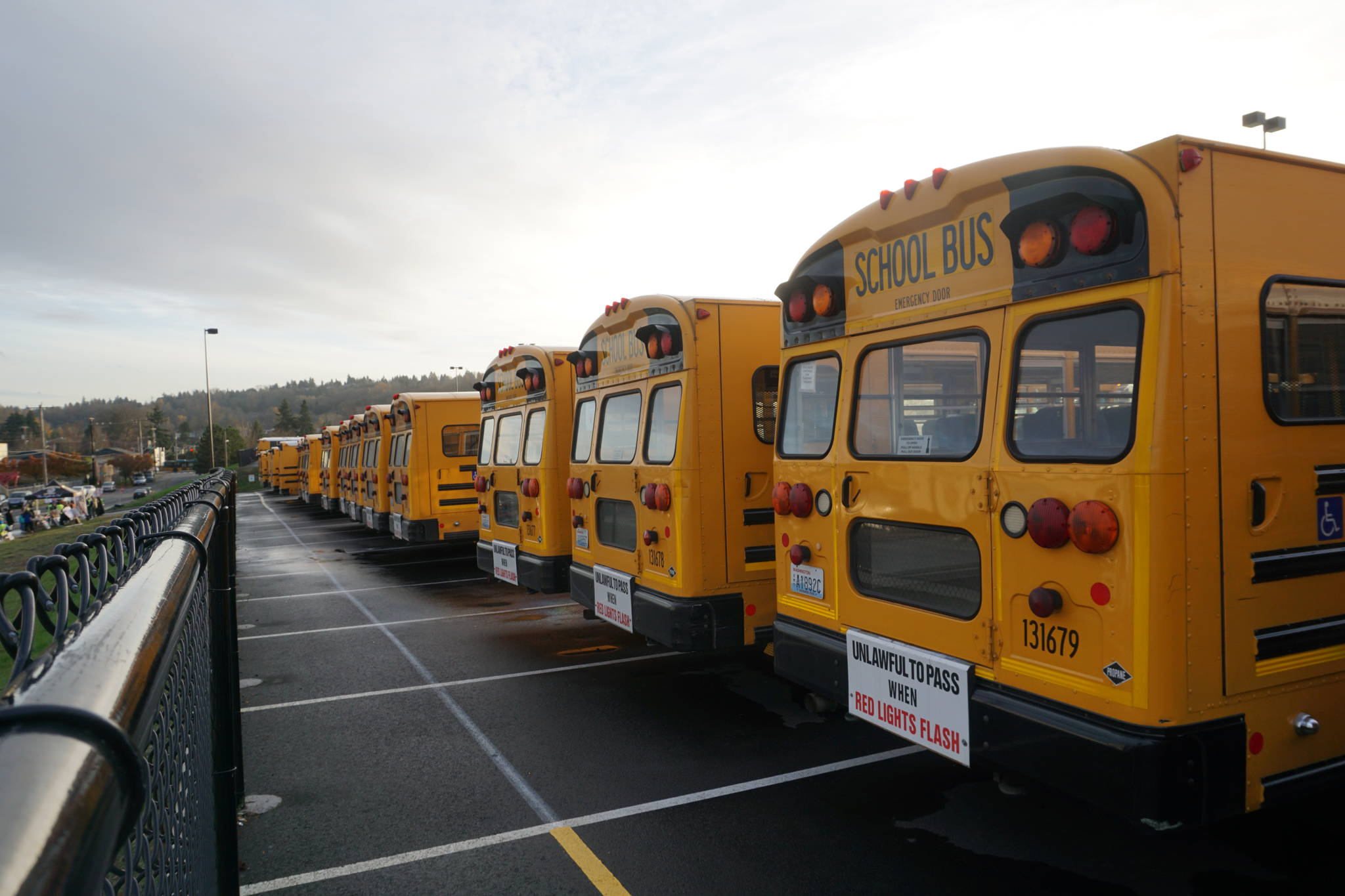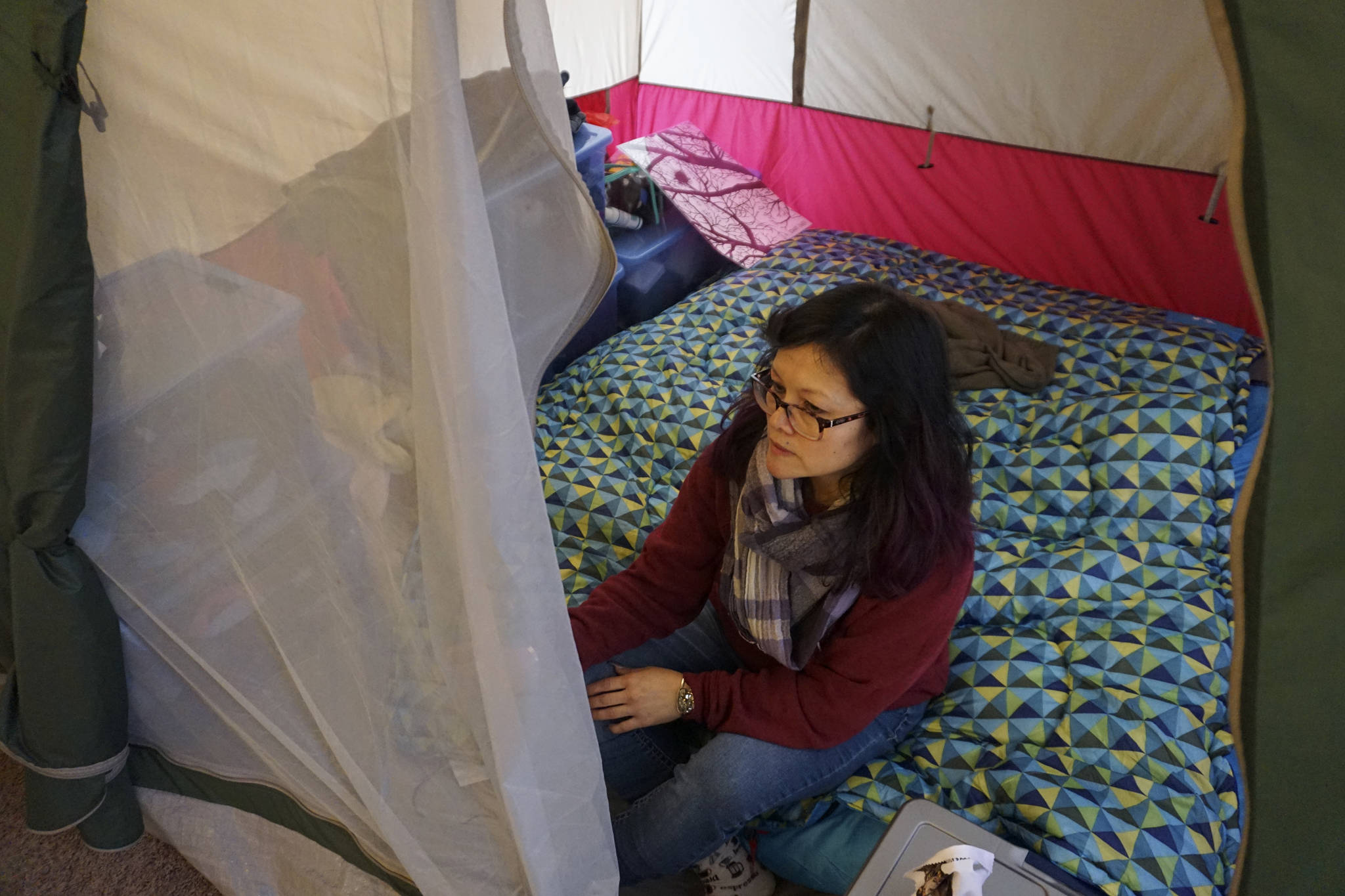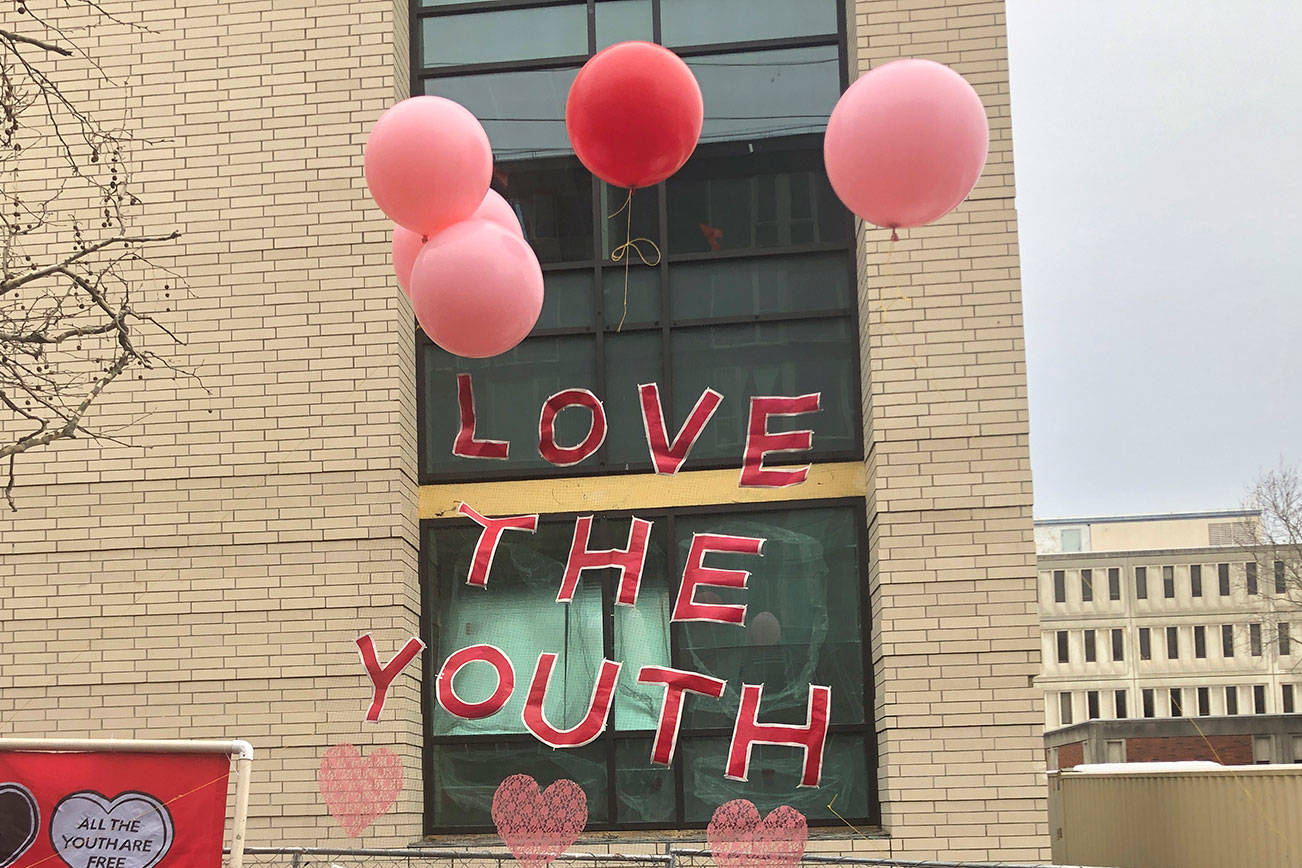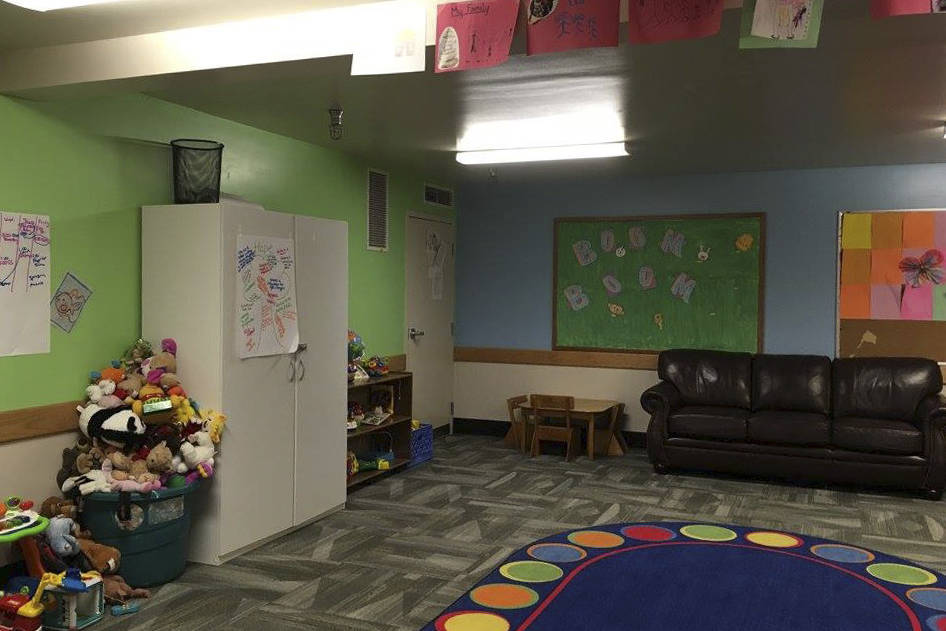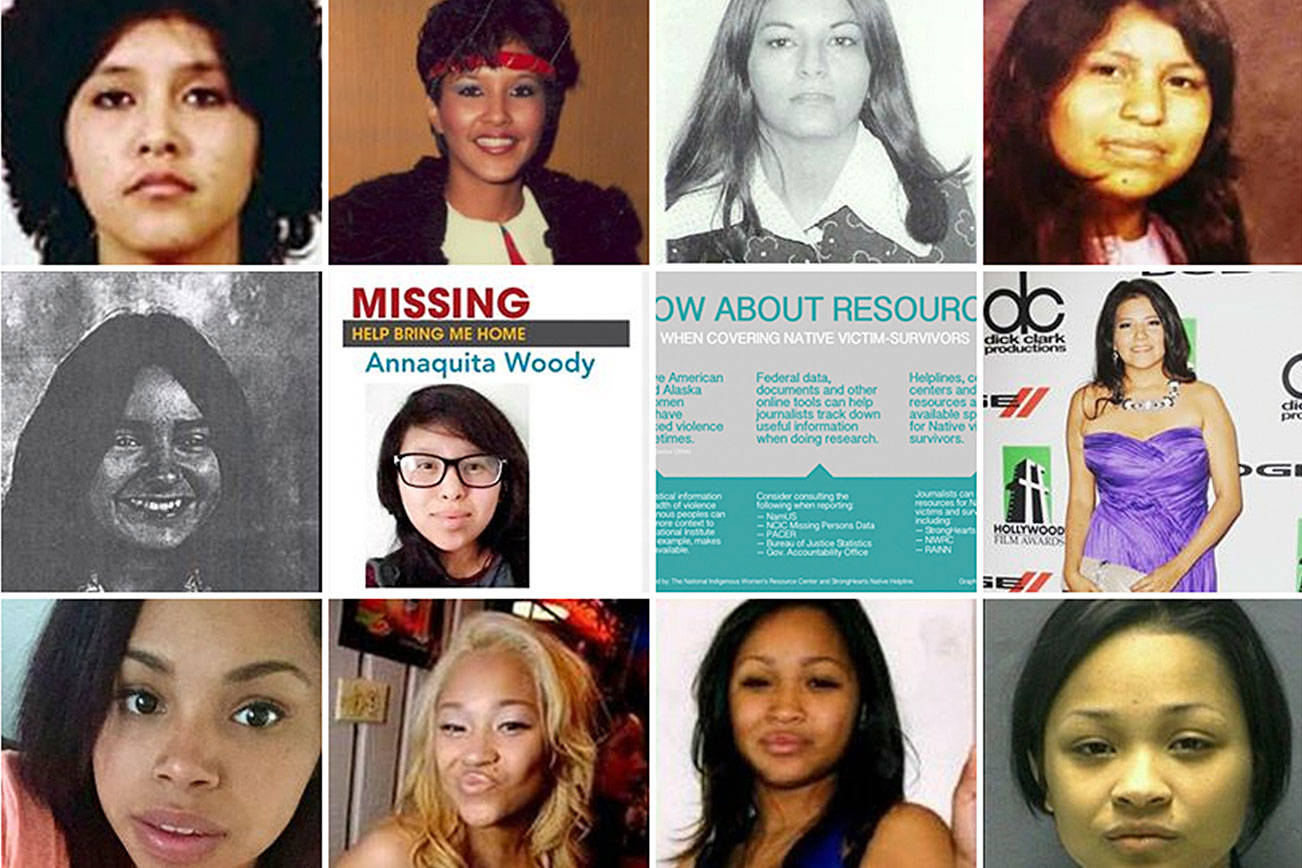On Thursday afternoon, school bus driver Chrystale Holiwell paced the sidewalk outside of South Park’s First Student bus lot as the interminable rain ricocheted off of her towering black umbrella. Holiwell joined about a dozen other bus drivers for the afternoon picketing shift during the first day of an unfair labor practice strike staged by Teamster’s Local 174, the union representing about 400 Seattle school bus drivers. It’s the second time this school year that Holiwell has hung up her bus keys and joined the picket line to demand more adequate healthcare and a retirement pension from bus contractor, First Student.
The 56-year-old isn’t covered by her company’s health insurance as a part-time employee, so she and her 9-year-old grandson rely on the Affordable Care Act. After working as a housekeeper at Valley Medical Center, Holiwell became a bus driver about a year ago to spend more time with her grandson, who she gained custody of following her son’s death in a car accident two years ago. “Life throws you all kinds of hard balls. You just have to get through them,” she said ruefully. To help soften the blow of some of life’s twists and turns, Holiwell wants her contract to include insurance for her and her grandson so that they can enroll in counseling to help process their grief.
But that won’t be a possibility for her under First Student’s Tuesday proposal, which only covers 80 percent of annual premiums for part-time employees like Holiwell. She worries that she’d have to pay $700 of a $1,000 hospital bill for an overnight stay if she or her grandson ever got sick. “I can’t afford that! That puts you back in the poor house,” Holiwell said, adding that she would need to pay an additional about $1,500 a month to include her grandson on her company insurance under the most recent proposal. First Student is offering comprehensive health care coverage for all full-time drivers, but Teamsters Director of Communication and Research Jamie Fleming said that there are only 22 bus drivers who would qualify by working 40 hour weeks for a full calendar year. That leaves the other over 350 bus drivers without full coverage.
Thursday was the first day of a strike without a clear end date in sight. No talks are scheduled with the bus contractor. “We’re just waiting for First Student to see the light, and do the right thing,” Fleming said as she sipped a cup of coffee. The union has been in negotiations with Ohio-based school bus contractor since July, and already staged a one-day strike on November 29. Some of the drivers picketing at First Student bus lots in South Park and Lake City complained that they’ve had to file for bankruptcy because of medical costs. One employee even had to let her cancer go untreated because she lacked medical insurance. For this reason, many parents, politicians, and other city employees have voiced their support for the drivers.
This week’s protest follows a Jan. 6 meeting at Local 174 Union hall, where drivers rejected First Student’s proposal by 85 percent. Fleming said that the most recent proposal offered at a bargaining session on Tuesday was similar to the one that drivers had already rejected. As Fleming spoke, she stood under a large blue tent bearing Local 174’s logo of two horses hovering above the cityscape. Behind her, yellow school buses sat motionless atop the hill, an eery reminder of all that’s at stake.
The afternoon was calm in comparison to November’s strike, in which about 10 Teamsters were hit by a driver who crossed the picket line that morning. Strikebreakers were more creative on Thursday, with some of them taking their buses home Wednesday evening to avoid crossing the picket line in the morning.
Meanwhile, the drivers on the picketline received support from workers in green recycling trucks who honked in solidarity as they passed by. Seattle City Councilmembers Teresa Mosqueda and Kshama Sawant also visited the drivers in the morning, and some parents stopped by with their children.
About 12,000 students are affected by the strike, which has forced families to rely on carpools, public transportation, walking, or car-for-hire services in lieu of school bus rides. Data collected by the school district shows that the strike affects school attendance. Seattle Public Schools spokesperson Kim Schmanke said in November that the district found a three percent increase in excused and unexcused absences on the day of the Nov. 29 strike compared to Nov. 15, the most recent Wednesday when all schools were in session. In an email on Friday, Schmanke said that on the first day of this strike (Feb.1) there were 150 more absences than the average absentee rate last month.
The Seattle Education Association (SEA), a union that represents 5,000 teachers and other school employees, has also endorsed the strike by voting in favor of a Wednesday walkout after students will have left school for the day. The details are still in the works, but educators plan on meeting up to picket. Barring a negotiation within the next few days, next week’s solidarity walkout will be the teacher union’s first. “The bus drivers are who our kids see first thing in the morning, so that kind of sets the tone for how they come into school,” said SEA President Phyllis Campano. “We see them as part of the educational system, so we want to make sure that they are healthy and have a secure retirement.”
She added that the district has also signaled that it is considering working with a company other than First Student in the future by potentially buying a piece of property to park buses. “What we were told is that they are doing due diligence on looking at a piece of property,” Campano said. Teamsters’ spokesperson Fleming corroborated Campano’s claim, adding that the move would allow the school district to lease the property out to other companies that could place their buses there. The school district did not respond to requests for comment.
First Student was the only contractor to submit a proposal when the district called for bids from school bus companies last year. The company is now in the first year of a three-year contract with the school district worth about $27 million per year.
First Student Senior Director of Corporate Communications Chris Kemper said in a Jan. 31 statement that the union was to blame for refusing to bring the proposal to the drivers for a vote. “The deal on the table, we believe, is fair and equitable to all parties,” Kemper said. “We care deeply about our drivers, and feel strongly that this deal reflects that. It’s extremely unfortunate that union leadership won’t let its members consider the deal on its merits.”
In the meantime, Holiwell fulfilled her shift on the picket line and plans on bringing her grandson to the South Park lot after she picks him up from school on Friday. He joined her for the last strike too. “He likes to walk the picket line,” Holiwell said with a toothy grin. “You got to teach them young.”
mhellmann@seattleweekly.com
This story has been updated with information on the increase in absenteeism during the strike.
